Fraxinellone-mediated targeting of cathepsin B leakage from lysosomes induces ferroptosis in fibroblasts to inhibit hypertrophic scar formation
- PMID: 39905520
- PMCID: PMC11796038
- DOI: 10.1186/s13062-025-00610-5
Fraxinellone-mediated targeting of cathepsin B leakage from lysosomes induces ferroptosis in fibroblasts to inhibit hypertrophic scar formation
Abstract
Background: Hypertrophic scar (HS) is a common fibrotic skin disorder characterized by the excessive deposition of extracellular matrix (ECM). Fibroblasts are the most important effector cells involved in HS formation. Currently no satisfactory treatment has been developed.
Methods: The impact of fraxinellone (FRA) on the proliferation and migration capacity of human hypertrophic scar-derived fibroblasts (HSFs) was assessed by EdU proliferation, wound healing and transwell assays. Quantitative real-time PCR (qRT‒PCR), Western blot (WB), immunofluorescence staining and collagen gel contraction assays were performed to evaluate the collagen production and activation capacity of HSFs. Oxford Nanopore Technologies long-read RNA sequencing (ONT long-read RNA-seq) revealed the occurrence of ferroptosis in HSF and ferroptosis executioner-cathepsin B (CTSB). The mechanisms underlying FRA-induced HSF ferroptosis were examined through fluorescence staining, qRT‒PCR, WB and molecular docking study. The therapeutic efficacy of FRA was further validated in vivo using a rabbit ear scar model.
Results: FRA treatment significantly suppressed the proliferation, migration, collagen production and activation capacity of HSFs. ONT long-read RNA-seq discovered that FRA modulated the expression of transcripts related to ferroptosis and lysosomes. Mechanistically, FRA treatment reduced the protein expression level of glutathione peroxidase 4 (GPX4) and induced the release of CTSB from lysosomes into the cytoplasm. CTSB further induced ferroptosis via spermidine/spermine-N1-acetyltransferase (SAT1)-mediated lipid peroxidation, mitochondrial damage and mitogen-activated protein kinase (MAPK) signalling pathway activation, eventually affecting the function of HSFs. Moreover, FRA treatment attenuated the formation of HS in rabbit ears via CTSB-mediated ferroptosis. The antifibrotic effects of FRA were abrogated by pretreatment with a CTSB inhibitor (CA-074-me).
Conclusions: This study reveals that FRA ameliorates HS by inducing CTSB leakage from lysosomes, causing SAT1-mediated lipid peroxidation, mitochondrial damage and MAPK signalling pathway activation, thus mediating HSF ferroptosis. Therefore, FRA could be a promising therapeutic agent for treating HS.
Keywords: Cathepsin B; Ferroptosis; Fraxinellone; Hypertrophic scar; Long-read sequencing.
© 2025. The Author(s).
Conflict of interest statement
Declarations. Ethics approval and consent to participate: HS and normal skin samples were collected from patients at the Department of Plastic and Reconstructive Surgery, Shanghai Ninth People’s Hospital. Written informed consent was obtained from patients or their legal guardians in accordance with the Declaration of Helsinki and it was approved by the Human Research Ethics Committee of Shanghai Jiao Tong University School of Medicine affiliated ninth people’s hospital (SH9H-2022-T143-2). None of the patients had received any treatment prior to surgery. The animal experiments were approved by the Animal Ethical Committee of Shanghai Jiao Tong University Nongsheng Biotechnology Co., Ltd. (JDLL 20230908-1). Consent for publication: Not applicable. Competing interests: The authors declare no competing interests.
Figures



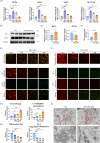
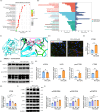
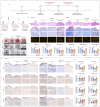
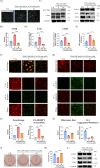
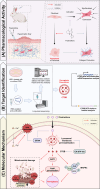
Similar articles
-
Dioscin improves hypertrophic scars by inducing apoptosis and ferroptosis of scar fibroblasts through mitochondrial oxidative stress damage.Eur J Pharmacol. 2025 Aug 15;1001:177759. doi: 10.1016/j.ejphar.2025.177759. Epub 2025 May 22. Eur J Pharmacol. 2025. PMID: 40412745
-
Exosomes derived from M2 macrophages promote fibroblast autophagy to contribute to hypertrophic scar formation via CXCL2/CXCR7/mTOR pathway.Hum Exp Toxicol. 2024 Jan-Dec;43:9603271241303320. doi: 10.1177/09603271241303320. Hum Exp Toxicol. 2024. PMID: 39557042
-
Corilagin alleviates hypertrophic scars via inhibiting the transforming growth factor (TGF)-β/Smad signal pathway.Life Sci. 2021 Jul 15;277:119483. doi: 10.1016/j.lfs.2021.119483. Epub 2021 Apr 20. Life Sci. 2021. PMID: 33862115
-
Botulinum toxin type A inhibits the formation of hypertrophic scar through the JAK2/STAT3 pathway.Biomol Biomed. 2024 Dec 11;25(1):249-258. doi: 10.17305/bb.2024.10906. Biomol Biomed. 2024. PMID: 39132968 Free PMC article.
-
Cathepsin B induces kidney diseases through different types of programmed cell death.Front Immunol. 2025 Mar 10;16:1535313. doi: 10.3389/fimmu.2025.1535313. eCollection 2025. Front Immunol. 2025. PMID: 40129990 Free PMC article. Review.
Cited by
-
Suppressing chondrocyte cuproptosis by syringaresinol-4-O-β-d-glucoside alleviates gouty arthritis.Front Pharmacol. 2025 May 9;16:1565422. doi: 10.3389/fphar.2025.1565422. eCollection 2025. Front Pharmacol. 2025. PMID: 40417211 Free PMC article.
References
-
- Jeschke MG, Wood FM, Middelkoop E, Bayat A, Teot L, Ogawa R, Gauglitz GG, Scars. Nat Rev Dis Primers. 2023;9(1):64. - PubMed
-
- Zhao B, Guo W, Zhou X, Xue Y, Wang T, Li Q, Tan LL, Shang L. Ferroptosis-Mediated Synergistic Therapy of Hypertrophic Scarring Based on Metal–Organic Framework Microneedle Patch. Adv Funct Mater. 2023;33(27).
MeSH terms
Substances
Grants and funding
- 2023ZZ02023/Shanghai Plastic Surgery Research Center of Shanghai Priority Research Center
- JYJC202236/Shanghai Ninth People's Hospital, Cross-research fund project
- 21ZR1437000/Shanghai Ninth People's Hospital, the Natural Science Foundation of Shanghai Municipal
- 2023ZDFC0303/the Health and Family Planning Commission of Shanghai Municipality
LinkOut - more resources
Full Text Sources
Research Materials
Miscellaneous

